#dad1ce Color Information
In a RGB color space, hex #dad1ce is composed of 85.5% red, 82% green and 80.8% blue. Whereas in a CMYK color space, it is composed of 0% cyan, 4.1% magenta, 5.5% yellow and 14.5% black. It has a hue angle of 15 degrees, a saturation of 14% and a lightness of 83.1%. #dad1ce color hex could be obtained by blending #ffffff with #b5a39d. Closest websafe color is: #cccccc.
-
- R 85
- G 82
- B 81
-
- C 0
- M 4
- Y 6
- K 15
● #dad1ce color description : Light grayish red.
#dad1ce Color Conversion
The hexadecimal color #dad1ce has RGB values of R:218, G:209, B:206 and CMYK values of C:0, M:0.04, Y:0.06, K:0.15. Its decimal value is 14340558.
| Hex triplet | dad1ce | #dad1ce |
|---|---|---|
| RGB Decimal | 218, 209, 206 | rgb(218,209,206) |
| RGB Percent | 85.5, 82, 80.8 | rgb(85.5%,82%,80.8%) |
| CMYK | 0, 4, 6, 15 | |
| HSL | 15°, 14, 83.1 | hsl(15,14%,83.1%) |
| HSV (or HSB) | 15°, 5.5, 85.5 | |
| Web Safe | cccccc | #cccccc |
| CIE-LAB | 84.465, 2.573, 2.582 |
|---|---|
| XYZ | 62.853, 64.963, 67.617 |
| xyY | 0.322, 0.332, 64.963 |
| CIE-LCH | 84.465, 3.645, 45.1 |
| CIE-LUV | 84.465, 5.365, 3.418 |
| Hunter-Lab | 80.6, -1.853, 6.68 |
| Binary | 11011010, 11010001, 11001110 |
Color Schemes with #dad1ce
Alternatives to #dad1ce
Below, you can see some colors close to #dad1ce. Having a set of related colors can be useful if you need an inspirational alternative to your original color choice.
#dad1ce Preview
This text has a font color of #dad1ce.
<span style="color:#dad1ce;">Text here</span>This paragraph has a background color of #dad1ce.
<p style="background-color:#dad1ce;">Content here</p>This element has a border color of #dad1ce.
<div style="border:1px solid #dad1ce;">Content here</div>.text {color:#dad1ce;}.background {background-color:#dad1ce;}.border {border:1px solid #dad1ce;}Shades and Tints of #dad1ce
A shade is achieved by adding black to any pure hue, while a tint is created by mixing white to any pure color. In this example, #070605 is the darkest color, while #fcfbfb is the lightest one.
-
#070605
#070605rgb(7,6,5) -
#120f0e
#120f0ergb(18,15,14) -
#1d1816
#1d1816rgb(29,24,22) -
#28211f
#28211frgb(40,33,31) -
#342a27
#342a27rgb(52,42,39) -
#3f332f
#3f332frgb(63,51,47) -
#4a3c38
#4a3c38rgb(74,60,56) -
#554540
#554540rgb(85,69,64) -
#604f49
#604f49rgb(96,79,73) -
#6b5851
#6b5851rgb(107,88,81) -
#77615a
#77615argb(119,97,90) -
#826a62
#826a62rgb(130,106,98) -
#8d736a
#8d736argb(141,115,106)
-
#967d75
#967d75rgb(150,125,117) -
#9f8880
#9f8880rgb(159,136,128) -
#a7928b
#a7928brgb(167,146,139) -
#b09d96
#b09d96rgb(176,157,150) -
#b8a7a1
#b8a7a1rgb(184,167,161) -
#c1b2ac
#c1b2acrgb(193,178,172) -
#c9bcb8
#c9bcb8rgb(201,188,184) -
#d2c7c3
#d2c7c3rgb(210,199,195) -
#dad1ce
#dad1cergb(218,209,206) -
#e2dbd9
#e2dbd9rgb(226,219,217) -
#ebe6e4
#ebe6e4rgb(235,230,228) -
#f3f0f0
#f3f0f0rgb(243,240,240) -
#fcfbfb
#fcfbfbrgb(252,251,251)
Tones of #dad1ce
A tone is produced by adding gray to any pure hue. In this case, #d7d3d1 is the less saturated color, while #febfaa is the most saturated one.
-
#d7d3d1
#d7d3d1rgb(215,211,209) -
#dad1ce
#dad1cergb(218,209,206) -
#ddcfcb
#ddcfcbrgb(221,207,203) -
#e1cec7
#e1cec7rgb(225,206,199) -
#e4ccc4
#e4ccc4rgb(228,204,196) -
#e7cac1
#e7cac1rgb(231,202,193) -
#ebc9bd
#ebc9bdrgb(235,201,189) -
#eec7ba
#eec7bargb(238,199,186) -
#f1c5b7
#f1c5b7rgb(241,197,183) -
#f4c4b4
#f4c4b4rgb(244,196,180) -
#f8c2b0
#f8c2b0rgb(248,194,176) -
#fbc0ad
#fbc0adrgb(251,192,173) -
#febfaa
#febfaargb(254,191,170)
Color Blindness Simulator
Below, you can see how #dad1ce is perceived by people affected by a color vision deficiency. This can be useful if you need to ensure your color combinations are accessible to color-blind users.
